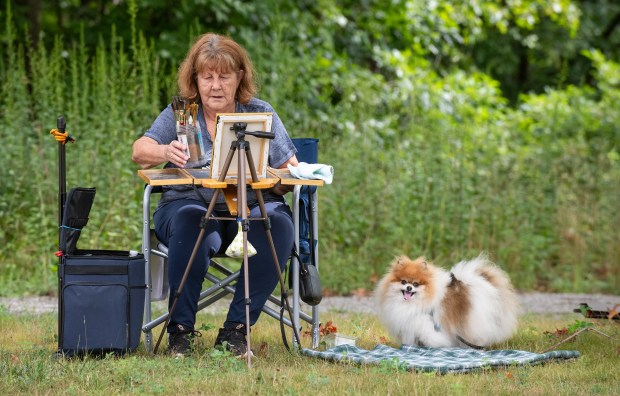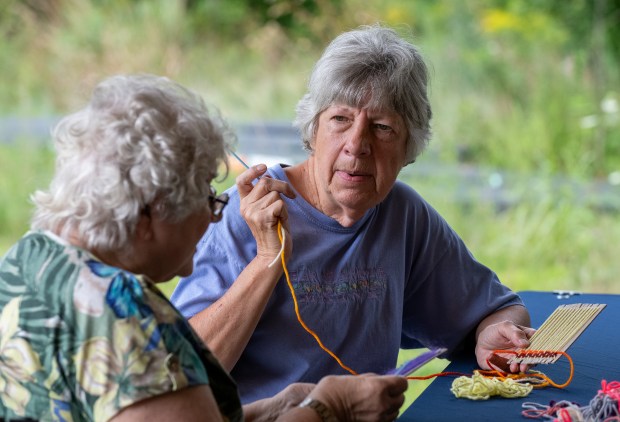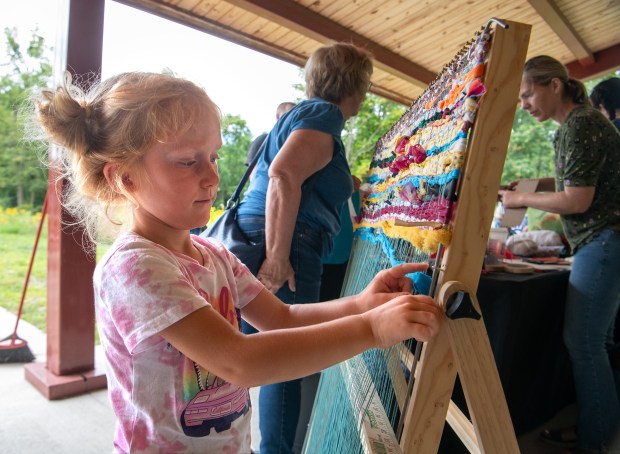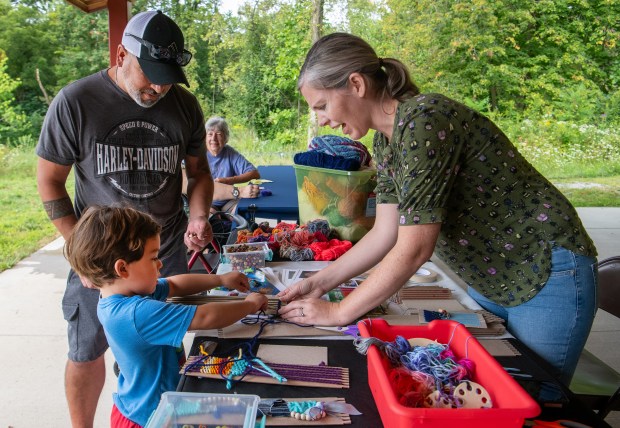An hour into “Weaving Through Waterways” the parking lot of Meadowbrook Nature Preserve in Valparaiso was full Saturday morning. It was an all-ages crowd ranging from preschoolers to older adults. Some headed out for guided nature walks while others sat in chairs to engage in plein air painting.
It was the third of four Nature in the Arts events sponsored by the Shirley Heinze Land Trust at its nature preserves across Northwest Indiana.
The events are in their fourth year and the 73 acres of Meadowbrook are just a fraction of the 3,400 acres of lands and waters Shirley Heinze has preserved and restored in Lake, Porter, LaPorte, St. Joseph, Starke and Marshall Counties since 1981.
Saturday’s event partnered with the Art Barn and the Chesterton Art Center to provide projects based on weaving. At the Art Barn table, visitors could choose between crafting a woven bracelet or keychain, or making a turtle from craft sticks and yarn.
The Chesterton Art Center table offered visitors the chance to make a wall hanging from beads and yarn.
“You could pick all different colors,” Cara Schmitt, education director for the Chesterton Art Center, told Jace Escobedo, 5, of Portage, who was selecting a yarn color for his project. “I have my eye on this one,” he said, pointing to an inky blue.
One table over Diana Poffinbarger and Gloria Potter, both of South Haven, were already weaving away on their wallhangings. The two Master Gardeners came out together.
“I don’t drive and she’s my driver, so I come where she comes,” Poffinbarger said with a laugh. “I’m going to see if they have as much poison ivy as I do.”
Artist Anita Phillips and her Pomeranian Willy, of South Haven, were parked under the shade of a tree so Phillips could work on a painting she’d previously begun.

“This is something I started at home and wanted to finish it,” said the member of the Duneland Plein Air Painters, which has 120 members.
About 15 to 20 of them gather at weekly events from April to October. Shirley Heinze preserves are a frequent stop. “We’re all from the same tribe if you know what I mean,” Phillips said of her fellow members.
Next to the pavilion volunteer naturalist Sarah Pavlovic introduced herself to a group gathered for a nature walk through a wood that Shirley Heinze is transitioning to all native species.
“I already have a connection with this place because I was a Girl Scout, and Shirley Heinze, part of it used to be a Girl Scout property,” she said.

The group hadn’t gone far along the quarter-mile gravel trail before Pavlovic had pointed out many facts about native forests. She explained that Indiana was once forested and promptly picked up a clump of dead oak leaves not 50 yards into the trail, showing her followers the work of a mother cicada.
“They lay like a little row of eggs in the slit they’ve created,” she said, showing them damage to a thin branch just above the leaves. “I read somewhere that female cicadas are super-picky about what branch they’ll use.”
She identified tall stalks with purple flowers as ironweed and pointed out invasive round-leaved bittersweet as a real problem to native trees.

Carol Rybak, of South Bend, knew what she was referring to. “It can wrap around a tree and choke it,” she added.
The next species of focus got a warmer reception as Pavlovic pointed out the mitten-shaped leaves of the tulip tree. “I always like to remind kids that it’s our state tree,” she said.
Then she pointed out the wonder of the sassafras tree, with its three differently shaped leaves and a bright berry cluster on the forest floor. “During the summer you wouldn’t know that there’s Jack-in-the-pulpit here,” Pavlovic said.
Shelley Jones is a freelance reporter for the Post-Tribune.




